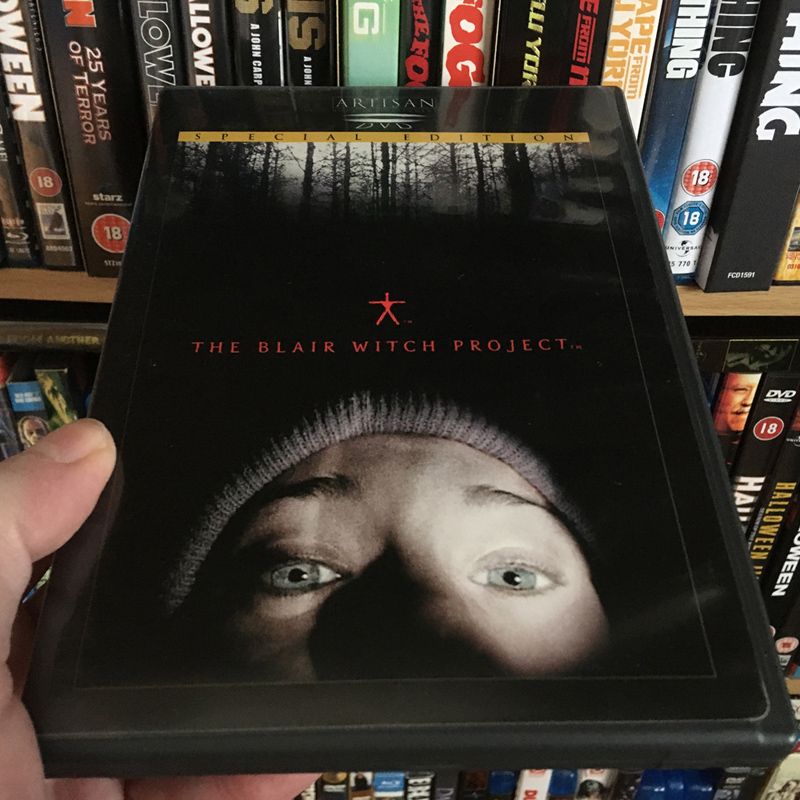Some enchanted evening: Revisiting The Blair Witch Project

So here’s a string of numbered thoughts about the film, because it’s easier than writing a proper review. And, yes, there are big spoilers.
-
The acting and dialogue (which of course was improvised) are brilliantly naturalistic.
-
The characters’ moods almost jump cut from scene to scene. One minute they’re raging at each other, the next laughing, without any on-screen making up. It suggests both the passing of time and the ebb and flow of real-life relationships.
-
This naturalism, plus the lack of movie-style incident or special-effects pay-off, gives the film an air of reality that still feels fresh.
-
I love this quote from one of the fishermen, in the first part of the film: “…she was babbling something about an old woman whose feet never touched the ground.” Brrr…
-
Mary Brown, the final interviewee, has such an unsettling look and demeanour. The 16mm B&W really sells her.
-
I’ve never bought into Mike deliberately kicking the map into the creek. It’s the one moment that feels written. Of course the entire plot was written, but this point feels a bit ‘Hollywood’ and out of place.
-
In the cold light of day, the filming of certain moments makes little sense. But the overall justification for keeping a camera running works as well as it needs to - enough to stop it bothering me - with Josh noticing the “filtered reality” of Heather’s lens and eventually goading her into admitting: “It’s all I fucking have left!”
-
That said, just how many bloomin’ tapes did they pack?
-
Bound twigs and piles of rocks might seem like strange antagonists, but they work because I’m right there with the characters, wondering who, or what, is trying to spook us - and what their endgame might be. The film plays on viewers’ fears of the unknown, to let their imaginations do the heavy lifting.
-
Ditto for the sounds heard at night, and the darkness, which you can’t escape - it just keeps rolling round. A subtle aid to the film’s sense of reality is that when night falls, we see a lot of black. This clearly isn’t a lit movie set.
-
Because there’s never any physical, on-screen threat, you can reach the end of the film and think: ‘Hang on, was there actually a supernatural element to this?’ But then you remember the spatial weirdness of the woods, and how the characters kept walking south but ended up in the same place. It’s a subtle, creepy clue that there really was something uncanny happening, and that they were doomed from the outset.
-
Heather’s bogies in close-up. Classic. Fearless.
-
I love the disorientation of the final minute, caused by the separation of sound and picture. You see what Heather sees, through her camera, but you hear her in another part of the house, the volume of her screams getting louder as she gets closer to Mike’s DAT recorder - and her own fate.
-
“So, er, what happened at the end?” The likely answer can be gleaned from the interviews near the start of the film, but it’s not signposted, and I like that. However, I also like the idea of not catching the clue, and the final moment standing alone, unexplained, like the bit in a nightmare that finally wakes you up.
-
The film isn’t scored - another tick in the ‘reality’ box - but the ambient music over the end credits, by Antonio Cora, is really creepy. It sounds like the film looks, and is the perfect way to send you to bed unnerved. A compliment, I assure you.
-
I’ve only just twigged (arf!), but The Blair Witch Project is a folk-horror film, isn’t it? And a fine addition to the canon it is, too.
I’ll leave it there, as 16 is a nice round number - in hexadecimal, anyway. And hex means bewitch, so it all ties together.
